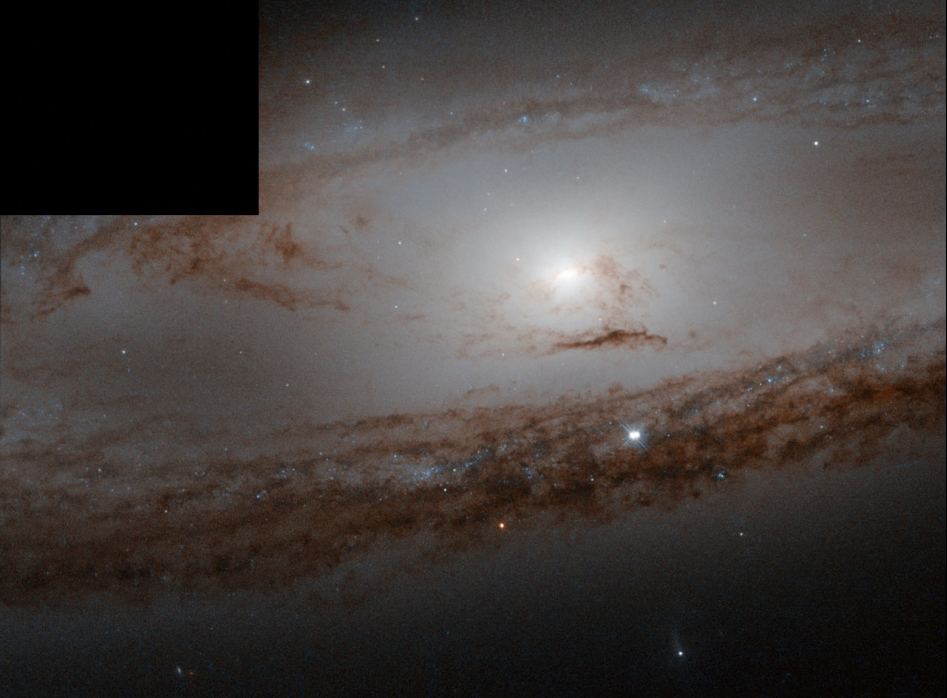Welcome back to Messier Monday! Today, we continue in our tribute to our dear friend, Tammy Plotner, by looking at the intermediate spiral galaxy known as Messier 65.
In the 18th century, while searching the night sky for comets, French astronomer Charles Messier kept noting the presence of fixed, diffuse objects he initially mistook for comets. In time, he would come to compile a list of approximately 100 of these objects, hoping to prevent other astronomers from making the same mistake. This list – known as the
Messier Catalog
– would go on to become one of the most influential catalogs of Deep Sky Objects.
One of these objects is the intermediate spiral galaxy known as Messier 65 (aka. NGC 3623), which is located about 35 million light-years from Earth in the Leo constellation. Along with with
Messier 66
and NGC 3628, it is part of a small group of galaxies known as the
Leo Triplet
, which makes it one of the most popular targets among amateur astronomers.
Description:
Enjoying life some 35 million light years from the Milky Way, the group known as the "Leo Trio" is home to bright galaxy Messier 65 - the westernmost of the two M objects. To the casual observer, it looks like a very normal spiral galaxy and thus its classification as Sa - but M65 is a galaxy which walks on the borderline. Why? Because of close gravitational interaction with its nearby neighbors. Who can withstand the draw of gravity?!
[caption id="attachment_138222" align="aligncenter" width="580"]
The Messier 65 intermediate spiral galaxy. Credit: ESO/INAF-VST/OmegaCAM/Astro-WISE/Kapteyn Institute
[/caption]
Chances are very good that Messier 65 is even quite a bit larger than we see optically as well. As E. Burbidge (et al) said in a
1961 study
:
But just how much interaction has been going on between the three galaxies which coexist so closely? Sometimes it takes things like studying in multicolor photometry data to understand. As Zhiyu Duan of the Chinese Academy of Sciences Astronomical Observatory indicated in a
2006 study
:
[caption id="attachment_138223" align="aligncenter" width="580"]
Messier 65, as imaged by the Hubble Space Telescope. Credit: NASA,/ESA/Hubble Space Telescope
[/caption]
So, let's try looking at things in a slightly different color - integral-field spectroscopy. As V.L. Afanasiev (et al) said in a
2004 study
:
Now, let's take a look at that gas - and the properties for the gases that exist and co-exist in the galactic trio. As David Hogg (et al) explained in a
2001 study
:
[caption id="attachment_138221" align="aligncenter" width="580"]
The Leo Triplet, with M65 at the upper right, M66 at the lower right, and NGC 3628 at the upper left. Credit: Scott Anttila. Credit: Wikipedia Commons/Anttler
[/caption]
Even more studies have been done to take a look a disc properties associated with M65. According to M. Bureau (et al);
History of Observation:
Both M65 and M66 were discovered on the same night - March 1, 1780 - by Charles Messier, who described M65 as "Nebula discovered in Leo: It is very faint and contains no star." Sir William Herschel would later observe M65 as well, describing it as "A very brilliant nebula extended in the meridian, about 12' long. It has a bright nucleus, the light of which suddenly diminishes on its border, and two opposite very faint branches."
However, it would be Lord Rosse who would be the first to see structure: "March 31, 1848. - A curious nebula with a bright nucleus; resolvable; a spiral or annular arrangement about it; no other portion of the nebula resolved. Observed April 1, 1848 and April 3, with the same results."
Locating Messier 65:
Even though you might think by its apparent visual magnitude that M65 wouldn't be visible in small binoculars, you'd be wrong. Surprisingly enough, thanks to its large size and high surface brightness, this particular galaxy is very easy to spot directly between Iota and Theta Leonis. In even 5X30 binoculars under good conditions you'll easy see both it and M66 as two distinct gray ovals.
[caption id="attachment_138220" align="aligncenter" width="472"]
Messier 65 location. Credit: IAU and Sky & Telescope magazine (Roger Sinnott & Rick Fienberg)
[/caption]
A small telescope will begin to bring out structure in both of these bright and wonderful galaxies, but to get a hint at the "Trio" you'll need at least 6" in aperture and a good dark night. If you don't spot them right away in binoculars, don't be disappointed - this means you probably don't have good sky conditions and try again on a more transparent night. The pair is well suited to modestly moonlit nights with larger telescopes.
Capture one of the Trio tonight! And here are the quick facts on this Messier Object:
- Object Name
-
Messier 65
- Alternative Designations
-
M65, NGC 3623, (a member of the) Leo Trio, Leo Triplet
- Object Type
-
Type Sa Spiral Galaxy
- Constellation
-
Leo
- Right Ascension
-
11 : 18.9 (h:m)
- Declination
-
+13 : 05 (deg:m)
- Distance
-
35000 (kly)
- Visual Brightness
-
9.3 (mag)
- Apparent Dimension
-
8x1.5 (arc min)
We have written many interesting articles about Messier Objects here at Universe Today. Here's Tammy Plotner's
Introduction to the Messier Objects
,
M1 – The Crab Nebula
, and David Dickison's articles on the
2013
and
2014
Messier Marathons.
Be to sure to check out our complete
Messier Catalog
. And for more information, check out the
SEDS Messier Database
.
Sources:
 Universe Today
Universe Today
